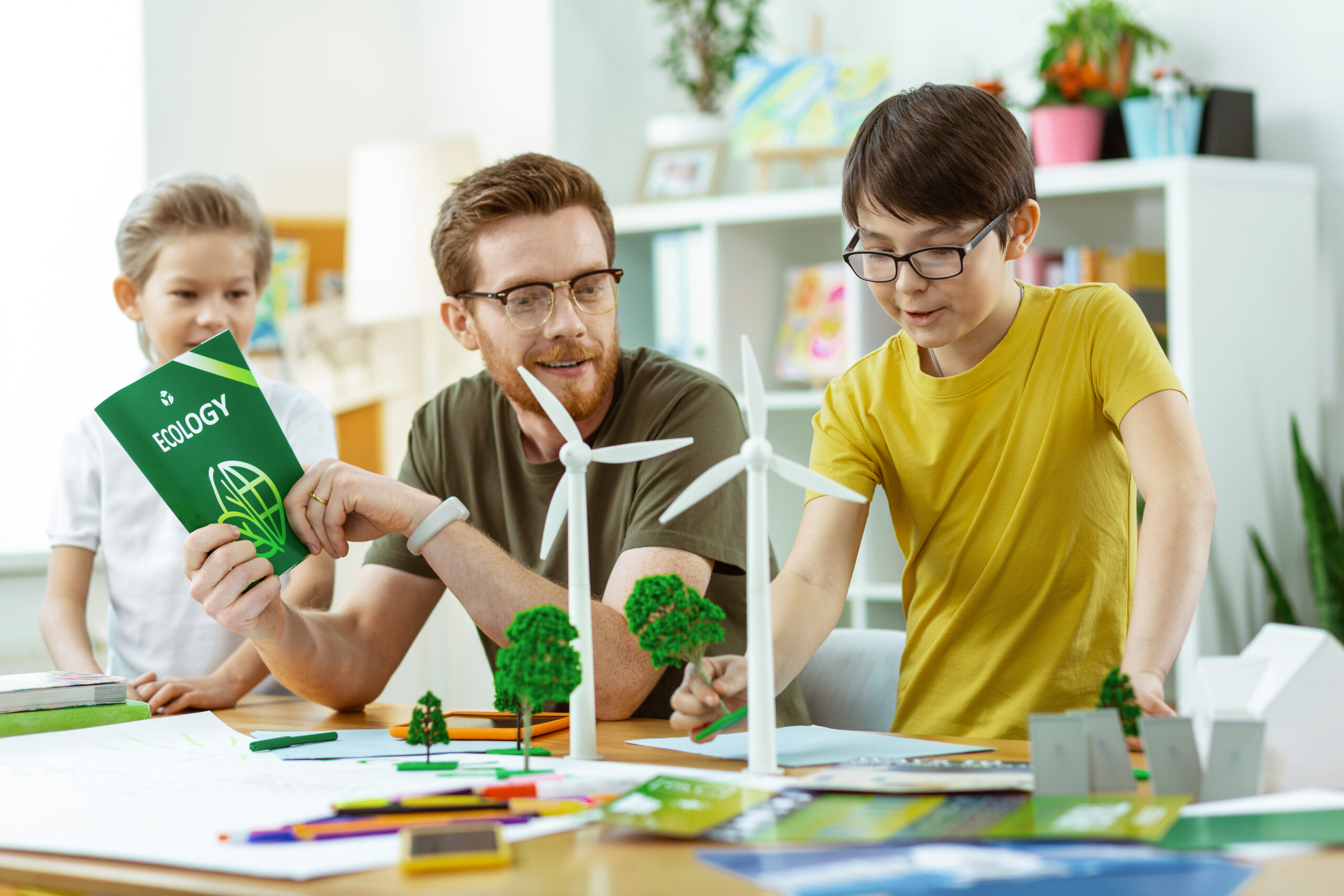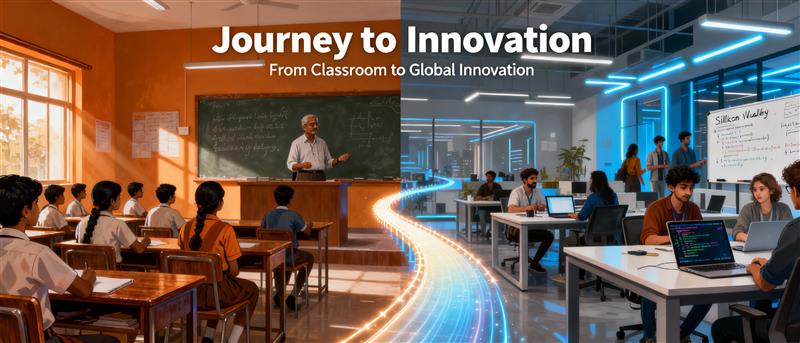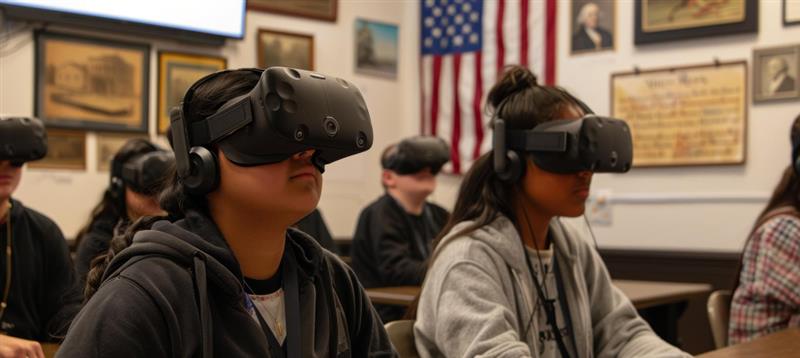Have you ever thought about how schools can really make a difference in sustainability? Or how educators and leaders can go beyond lessons and turn ideas into real change? That’s what future-focused graduate programs are doing. They’re helping teachers, administrators, and policymakers learn how to lead schools that care for both students and the environment.
Sustainability has moved beyond textbooks. It now shapes how schools operate, design their spaces, and teach their students. From using renewable energy to reducing waste and promoting social awareness, education is beginning to mirror the values of a responsible and forward-thinking world.
Why Sustainability Matters in Education
Education shapes how people think and live. When children grow up in schools that value sustainability, they learn to care about the planet in real, practical ways.
According to a 2025 UNESCO report, majority of schools now teach sustainability in some form. But only 40% have leaders trained to put sustainable policies into practice. That’s why graduate programs that focus on sustainability leadership are becoming more important than ever.
The Changing Role of School Leaders
In the past, school leaders mostly focused on academics and budgets. Today, they also need to think about energy use, food systems, and community partnerships.
A modern school leader might help the school shift to solar energy, reduce cafeteria waste, or add outdoor learning spaces that connect students with nature. Every small step creates both financial and environmental benefits.
Graduate programs that focus on sustainability help leaders learn how to make these changes. They explore how to plan green budgets, measure carbon footprints, and design systems that work long-term.
What Makes Sustainability Graduate Programs Different
You might wonder how these programs differ from traditional education degrees. The answer is in how they mix leadership, environmental science, and innovation.
Here’s what they usually include:
- Interdisciplinary Learning: Courses cover topics like sustainable finance, ethics, and systems thinking.
- Practical Projects: Students work on real projects such as redesigning school buildings or developing waste management plans.
- Data-Based Decisions: Programs teach how to use data to track progress and make smart sustainability choices.
- Community Involvement: Students partner with local governments, NGOs, or private organizations to put classroom ideas into action.
Acacia University offers programs that help education professionals design sustainable learning systems and lead with social awareness.
Training Leaders Who Can Create Real Impact
Today’s educational leaders are expected to be change-makers. Graduate programs focused on sustainability help them become systems thinkers — people who can see how every part of an organization connects to the bigger picture.
For instance, a principal who wants their school to go carbon-neutral by 2030 will need to plan energy use, train staff, and involve parents. A graduate trained in sustainability leadership knows how to guide each step and bring everyone together toward the same goal. Also, schools will need more leaders who understand how to balance environmental and educational goals.
The Human Side of Sustainability
Sustainability is not only about saving energy or reducing waste. It’s also about people. Programs that teach sustainable leadership often focus on empathy, inclusion, and community impact.
For example, when a school chooses to buy food from local farmers, it helps the community while also reducing transport emissions. When schools switch to hybrid learning systems, they save paper and give students more flexible access to education.
Sometimes students ask, “Can small actions really make a difference?” The answer is yes. When many schools take small, consistent steps like using less paper, recycling more, or saving water it definitely adds up to a big change.
Technology’s Role in Green Education
Technology has become a big part of sustainable education. Online learning tools reduce the need for printed materials. Smart energy systems help schools monitor and reduce electricity use. AI and data analytics are being used to measure progress and find areas where resources can be saved.
In graduate programs, students learn how to use these tools. They might analyze school energy data, design digital systems that track sustainability goals, or simulate eco-friendly campus layouts before construction.
Learning That Connects to the Real World
Future-focused programs don’t stop at theory. They emphasize real experience. Students often work with schools, community projects, or educational startups.
At Acacia University, for example, the graduate program encourages students to design learning environments that are both inclusive and eco-friendly. They also practice how to communicate sustainability goals clearly so that teachers, parents, and communities understand the purpose behind each step.
These programs help professionals become confident leaders who can balance innovation, responsibility, and impact.
Common Challenges Schools Face
Putting sustainability into action isn’t always easy. Some schools struggle with limited budgets. Others face resistance to change or lack of awareness.
How do graduate programs prepare leaders for this? By helping them plan smartly and think long-term. Students learn how to include sustainability investments in financial planning and how to introduce changes gradually. They’re trained to guide teams, build support, and find creative ways to make eco-friendly ideas affordable.
Building a Culture of Sustainability
Sustainability in schools goes beyond using solar panels or recycling bins. It’s about teaching values like responsibility and compassion. When schools treat sustainability as part of everyday life, students start seeing it as normal behavior, not an extra effort.
Leaders who graduate from sustainability programs bring this mindset into every policy they make. They help schools run efficiently, save costs, and inspire students to care about their communities.
FAQs About Sustainability in Schools
1. Why is sustainability important in education?
Because it shapes how young people understand and interact with the world. Teaching sustainability helps students become responsible citizens and problem-solvers.
2. Who should study sustainability-focused graduate programs?
Educators, school administrators, and even professionals from business or policy backgrounds who want to lead change in education systems.
3. What career opportunities do these programs open up?
Graduates can become sustainability consultants, education leaders, curriculum designers, policy advisors, or researchers.
4. How long do these programs take to complete?
Most take between one and two years, depending on the course format and whether students study full-time or part-time.
The Future of Sustainable Education
Schools everywhere are beginning to think not just about learning outcomes but also about long-term environmental and social impact.
The future of education will depend on how well we connect innovation with responsibility. It’s not enough for schools to focus only on grades or test results. They need to teach what it means to live responsibly and lead with purpose.
Future-focused graduate programs are preparing leaders who can make that happen. In more clear words, leaders who think globally and act locally. They remind us that education isn’t just about preparing students for jobs. It’s about preparing them for life.
And maybe that’s the best part. The classrooms of today are quietly shaping the greener, wiser, and more caring world of tomorrow.









